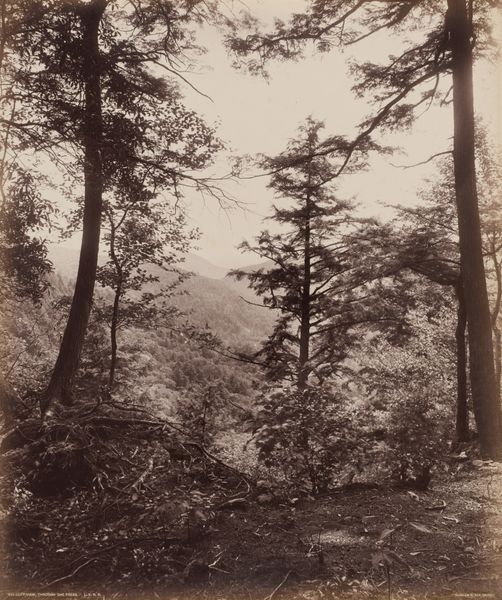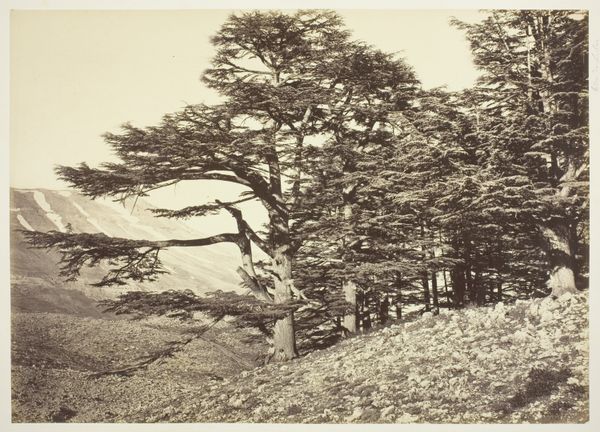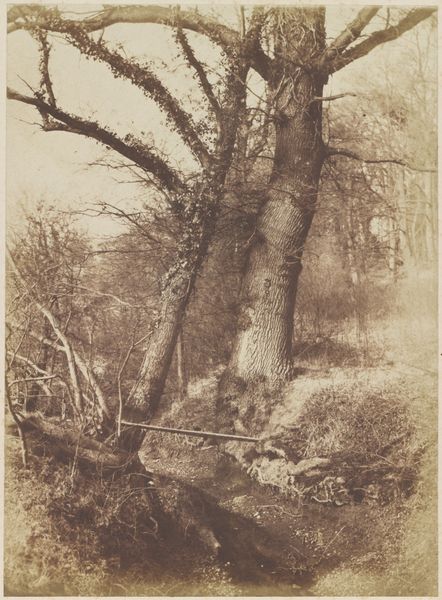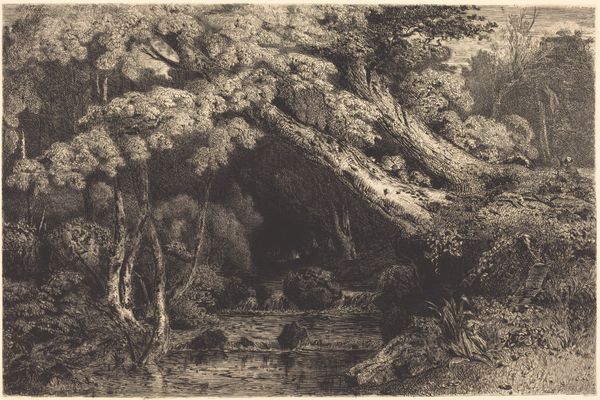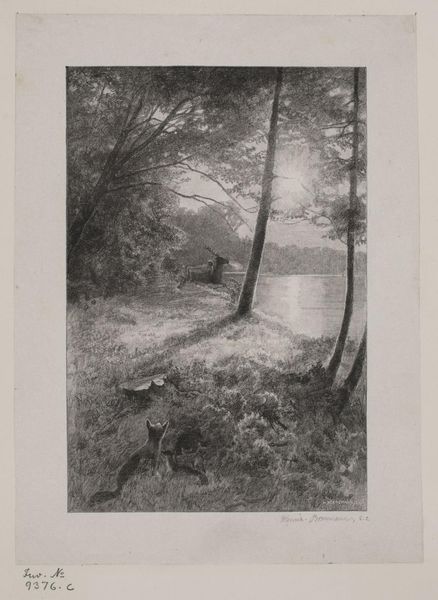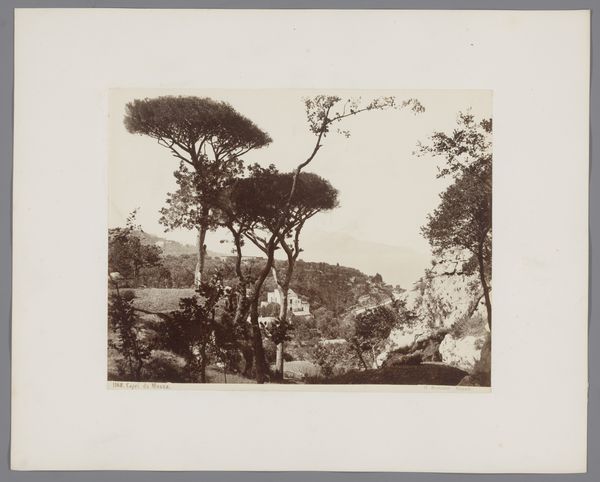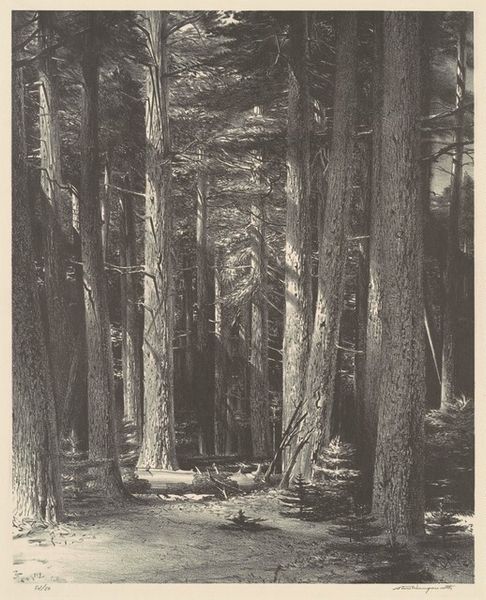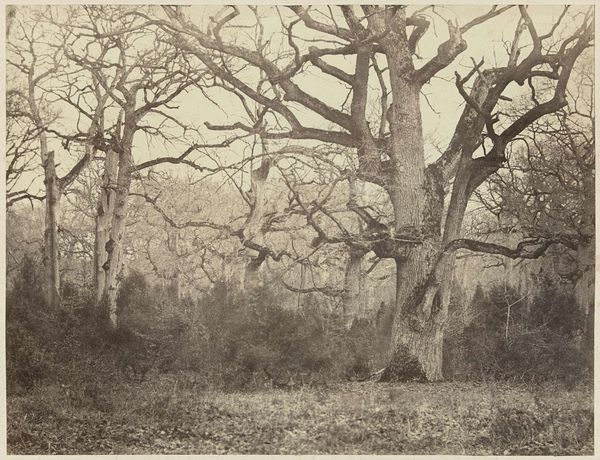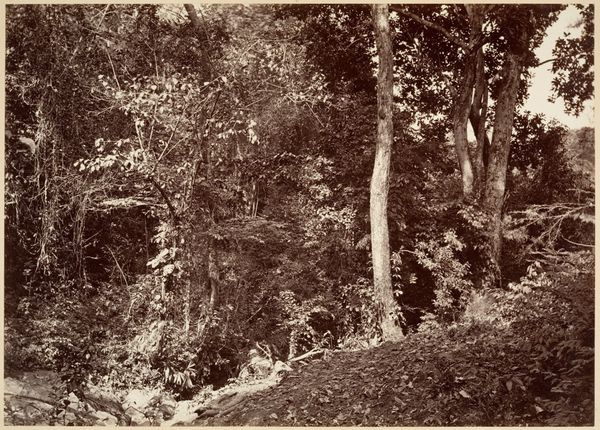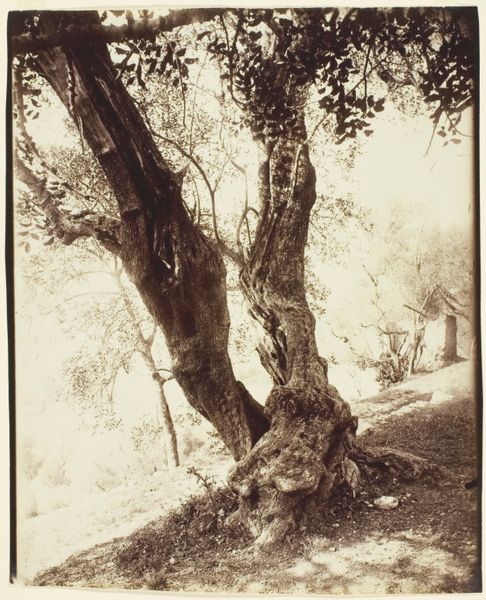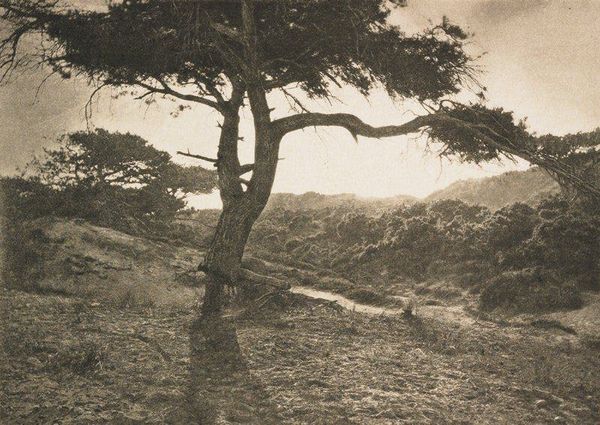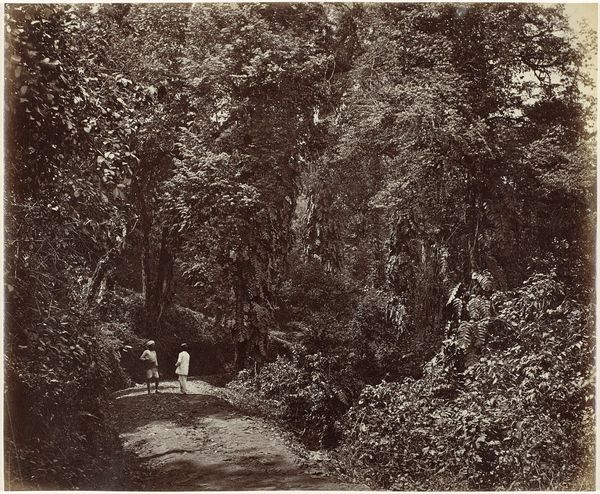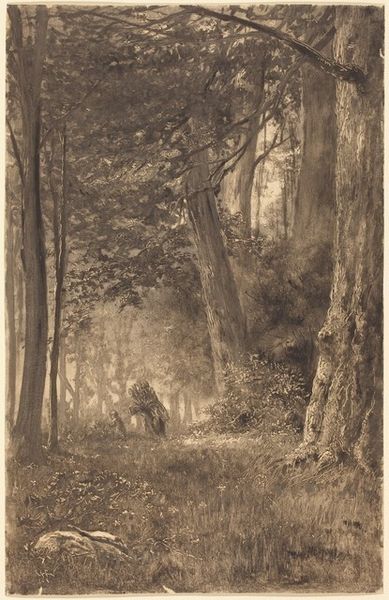
photography
#
landscape
#
nature
#
photography
#
realism
Dimensions: height 239 mm, width 288 mm, height 355 mm, width 400 mm
Copyright: Rijks Museum: Open Domain
Curator: Before us is Samuel Bourne's "Two Cedar Trees, Himachal Pradesh, India," taken between 1863 and 1864. It's a stunning landscape photograph, isn't it? Editor: Monumental is the first word that springs to mind. The sheer size of those cedar trees… It’s both awe-inspiring and somewhat melancholic, looking at the sheer mass of wood that needed to be transported for that process. Curator: The cedar, historically and across cultures, symbolizes strength, resilience, and immortality. Think of the cedars of Lebanon, revered since ancient times for their use in temples and palaces. Do these trees carry that weight of symbolic resonance for you? Editor: Perhaps indirectly. I am struck by the practical side: getting all that cumbersome photographic equipment there, setting up, and processing in a dark tent in 1863 in what's now India, that colonial-era journey itself lends a very concrete weight of labor and means of resource appropriation to the shot. Curator: It speaks volumes about Victorian society’s thirst for documenting and controlling its empire. Bourne himself journeyed through challenging terrain to capture these images. I wonder what kind of impact these trees may have held for people there? Editor: Yes, the perspective also makes a statement – nature reduced to a prospect, a scene, something that is there to be surveyed and captured with this laborious material process of making these prints. I wonder who had the first printed copy, when. That materiality speaks to how and where it would travel, and what wealth. Curator: These cedars predate Bourne's photograph by centuries, though, silently observing societal shifts and imperial ambitions. And this photograph—in some way it captures time, almost pinning down an aspect of infinity for us. I am stuck by the enduring weight that trees take within our myths. Editor: Absolutely. The photo does invite us to consider its creation and afterlives across a number of axes-- labor, colonial ambitions, materials--and that still lends to a kind of sublime grandeur. Curator: A fascinating intersection of material reality and timeless symbolism indeed!
Comments
No comments
Be the first to comment and join the conversation on the ultimate creative platform.
